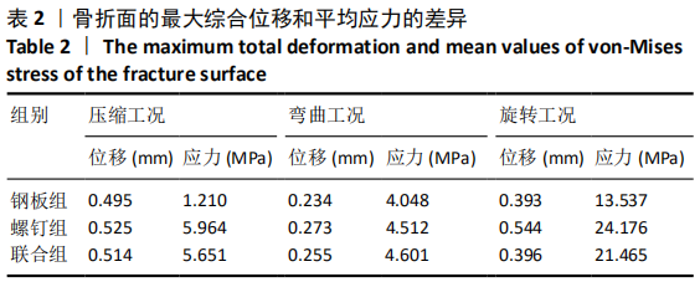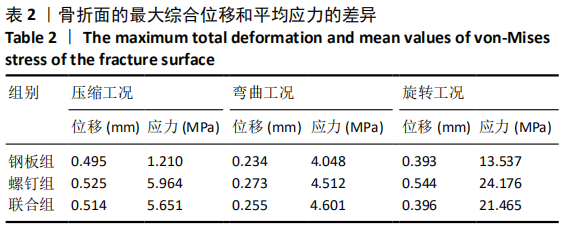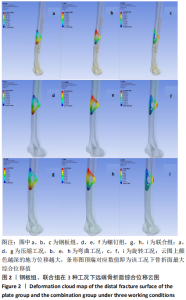[1] 孙荣华,刘大雄,吴晓峰,等.投弹训练肱骨骨折发生情况和评残情况调查[J].人民军医,2005,48(6):311-312.
[2] 崔运利,刘振东,田冠玉,等.应用悬垂石膏结合石膏夹板治疗肱骨投弹骨折的疗效[J].第三军医大学学报,2018,40(3):255-258.
[3] 檀臻炜,姚一民,娄延举,等.新兵投弹训练致肱骨中下段螺旋形骨折的手术治疗[J].中国综合临床,2015,31(13):85-86.
[4] 朱显科,吴望晟,左新成,等.有限接触动力加压钢板与微创拉力螺钉治疗投弹骨折疗效比较[J].现代生物医学进展,2017,17(16): 3095-3098.
[5] 田竞,李秀岩,周大鹏,等.髓内钉与干骺端锁定加压钢板治疗肱骨投弹骨折的疗效比较[J].中国骨与关节外科,2012,5(2):140-144.
[6] 高培刚,张晨阳,刘文华.小切口复位外固定架或联合螺钉固定治疗肱骨投弹骨折[J].中国骨与关节损伤杂志,2016,31(11):1212-1213.
[7] 宋子卫,林舟丹,刘传太,等.微创内固定与切开复位钢板内固定治疗肱骨投弹骨折疗效比较[J].临床骨科杂志,2011,14(1):67-69.
[8] WANG C, DAI G, WANG S, et al. The function and muscle strength recovery of shoulder after humeral diaphysis fracture following plating and intramedullary nailing. Arch Orthop Trauma Surg. 2013;133(8): 1089-1094.
[9] 覃万安,蒋凌星,吴凤富,等.可吸收螺钉联合缝线固定治疗肱骨干投弹骨折[J].中国骨科临床与基础研究杂志,2020,12(1):28-33.
[10] 郑翔,章莹.肱骨投掷骨折的发生机制与治疗进展[J].实用骨科杂志,2015,21(3):237-239.
[11] 郑翔,章莹,单永兴,等.锁定加压钢板与交锁髓内钉固定肱骨投掷骨折的有限元分析[J].中国临床解剖学杂志,2015,33(2):213-217.
[12] 郑翔,章莹,单永兴,等.动力加压钢板固定肱骨中下段螺旋形骨折的有限元分析[J].中国矫形外科杂志,2015,23(4):343-348.
[13] 黄晓微,龚中华,禹宝庆,等.可吸收螺钉置入固定简单外踝骨折的有限元分析[J].中国组织工程研究,2016,20(4):559-563.
[14] NAJIBI S, BANGLMEIER R, MATTA J, et al. Material properties of common suture materials in orthopaedic surgery. Lowa Orthop J. 2010;30:84-88.
[15] 梁鼎天,姚志城,徐培青,等.可吸收螺钉和加压空心螺钉治疗Jones骨折的比较[J].实用骨科杂志,2016,22(4):366-369.
[16] 温晓东,鹿军,赵宏谋,等.可吸收螺钉与金属螺钉治疗 Maisonneuve骨折对比分析[J].中国修复重建外科杂志,2020,34(4):482-488.
[17] 谭力,徐晓明,王桂华,等.可吸收螺钉联合可吸收线双8字形环扎内固定治疗髌骨骨折[J].中国骨与关节损伤杂志,2018,33(4):414-415.
[18] 张继业,王新,杨琳,等.可吸收螺钉张力带固定横行髌骨骨折的生物力学研究[J].实用骨科杂志,2014,20(12):1100-1103.
[19] 倪建龙,时志斌,党晓谦,等.关节镜下双股ETHIBOND线固定治疗后交叉韧带胫骨止点撕脱骨折的疗效观察[J].中国骨与关节杂志,2016,5(10):735-738.
[20] 孙海滨,李军,周勇.关节镜下可吸收螺钉联合Ethibond缝线治疗成人胫骨髁间棘Ⅱ、Ⅲ型骨折疗效分析[J].中国骨与关节损伤杂志, 2016,31(6):651-652.
[21] 孙若宾.可吸收螺钉治疗老Barton骨折临床疗效观察[J].实用中西医结合临床,2017,17(1):69-70.
[22] 邓雄伟,华水生,胡和军.等.可吸收材料内固定治疗Bryan-MorreyⅠ型肱骨小头骨折疗效分析[J].中国骨与关节损伤杂志,2018,33(1): 76-77.
[23] 杨胜号,邱继明.婴幼儿股骨干骨折可吸收螺钉联合髋人字石膏治疗体会[J].生物骨科材料与临床研究,2015,12(1):76-77.
[24] 唐谨,郭卫春,胡金凤,等.可吸收螺钉在骨科的应用及研究[J/CD].中华临床医师杂志(电子版),2012,6(3):790-791. http://med.wanfangdata.com.cn/Paper/Detail?id=PeriodicalPaper_zhlcyszz201203077&dbid=WF_QK.
[25] 张世民,刘大雄.肱骨投弹骨折的分型及意义[J].临床骨科杂志, 2002,5(3):177-179.
[26] COLLINGE CA, STERN S, CORDES S, et al. Mechanical properties of small fragment screws. Clin Orthop Relat Res. 2000;(373):277-284.
[27] 王立,尚希福,戴尅戎,等.可吸收高强度左旋聚丙交酯棒固定兔股骨干骨折[J].临床骨科杂志,2004,7(2):213-216.
[28] NI M, WONG DW, MEI J, et al. Biomechanical comparison of locking plate and crossing metallic and absorbable screws fixations for intra-articular calcaneal fractures. Sci Chin Life Sci. 2016;59(9):958-964.
[29] MüLLER DA, SNEDEKER JG, MEYER DC. Two-month longitudinal study of mechanical properties of absorbable sutures used in orthopedic surgery. J Orthop Surg Res. 2016;11(1):111.
[30] 庄云强,吴丹海,张经炜,等.不同手术入路治疗肱骨中下段骨折桡神经医源性损伤比较[C]//2009 年浙江省骨科学学术年会论文汇编.杭州:浙江省医学会骨科学分会,2009.
|





